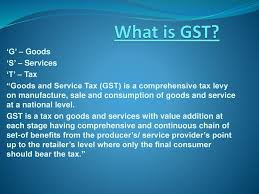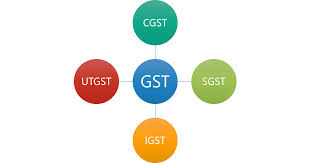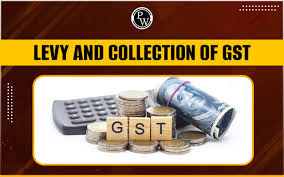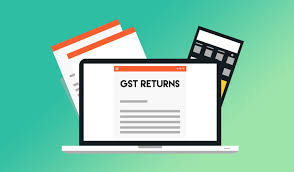WHAT IS GST?
GST or Goods and Service Tax is a comprehensive,
destination-based tax on the supply of certain goods and services. It was
implemented in order to replace the variety of indirect taxes (like VAT,
excise, import and export duty, etc.) that existed before it; so as to make the
taxing process easier and less convoluted. The rates are still more or less the
same, however, having one tax makes it a lot easier to track the calculation
and to curb evasion.
If the previous taxes focused on the point of
origin of a product or service, GST is calculated from the perspective of the
point of consumption. Pre-GST, the statutory tax rate for most goods was about
26.5%; post-GST, most goods are expected to be in the 18% tax range.
HISTORY OF GST
The tax system was implemented from July 1, 2017
through the 101st Amendment of the
Constitution. However, the idea of it was conceived much earlier.
In 2000, the then Prime Minister Shri Atal
Bihari Vajpayee established a committee tasked with drafting a new
comprehensive law and setting up the background technology and logistics for
it.
A task force set up in 2002, called the Kelkar
committee, was responsible for recommending tax reforms.
In February 2006, the then finance minister
proposed a GST rollout by April 1, 2010. It wasn’t successful and the new
government after the 2014 elections, the new Finance Minister introduced the
GST Bill in the Lok Sabha.
In May 2016, the Lok Sabha passed the
Constitution Amendment Bill, which was sent back for review and was finally
passed by the Select Committee of Rajya Sabha in August 2016. A 21-member
selected committee, called the GST Council was formed to look into the proposed
GST laws which were passed by the Lok Sabha and Rajya Sabha and enacted as Acts
in April 2017.
Following that, state legislatures in several
states passed the corresponding state goods and services tax bills. After
several GST laws were passed, the Goods and Services Tax was implemented across
all of India as of July 1, 2017.
TYPES OF GST
There are 4 types of GST in function today:
- Central
Goods and Services Tax: CGST is charged on the intra state
supply of products and services.
- State
Goods and Services Tax: SGST is charged on the sale of products
or services within the boundaries of a state.
- Integrated
Goods and Services Tax: IGST is charged on transactions of
products and services across state boundaries.
- Union
Territory Goods and Services Tax: UTGST is levied on the supply of products and
services in any of the Union Territories in the country, viz. Andaman and
Nicobar Islands, Daman and Diu, Dadra and Nagar Haveli, Lakshadweep, and
Chandigarh. UTGST is imposed along with CGST.
ADVANTAGES OF
GST
1. GST got rid of the cascading effect that was
experienced earlier, which was basically when tax was calculated on an amount
that included another tax.
2. It created a level and higher threshold for
eligibility as before, the limits for imposing different indirect taxes
differed from tax to tax and from state to state. Implementation of GST set the
overall threshold for taxing to Rs. 20 lakhs countrywide.
3. GST introduced a composition scheme which has
brought down the tax and compliance burden on a number for small businesses and
start-ups.
4. The entire GST process, from registration to
filing returns, is online and far easier to follow than running from one place
to another for different tax registrations.
5. Before GST, every tax seemed to have
different compliance conditions. Under GST, however, there is only one return
to be filed.
6. GST defined the laws and provisions for
e-commerce businesses which were variable under the previous tax regime.
DESTINATION
BASED LEVY
The concept of GST was introduced as a
comprehensive, destination based tax. Let’s take a look at what exactly that
means with an example
Let's say that there is a manufacturer in
Bangalore who produces shoes. The manufacturer purchases raw materials, such as
leather and rubber, from suppliers located in different parts of the country.
Once the shoes are manufactured, they are then sold to distributors who are
located in various states. Finally, the shoes are sold to retailers and
consumers across India.
Under the GST system, the tax is calculated at
every stage of production, including the purchase of raw materials, the
manufacturing of the shoes, and the sale of the shoes to distributors,
retailers, and consumers. However, the GST paid at each stage of production is
added to the cost of the product, and ultimately, it is the final consumer who
bears the cost of the tax.
Since GST is a destination-based tax, the tax
revenue collected on the sale of the shoes will be given to the state where the
shoes are ultimately consumed by the end consumer. So, if a customer in Mumbai
purchases the shoes, the GST revenue collected on the sale will go to the state
of Maharashtra where the shoes were consumed.
In this way, the concept of GST as a
destination-based tax ensures that the tax revenue is collected in the state
where the product is ultimately consumed, making the tax system more efficient
and equitable.
GST COUNCIL
The GST Council, which oversees GST, is composed of
33 members, including 2 from the union government and 31 from 28 states and 3
union territories with legislatures. The council is made up of:
(a) the Union Finance Minister, who also serves
as its chair
(b) the Union Minister of States responsible for
Revenue or Finance, who also serves as one of the council's members; and,
(c) the Ministers of States responsible for
Finance or Taxation, or other Ministers as designated by each State Government
(as member).
GSTN and GSTIN
The GSTN or the GST Network is a non-profit
organisation which was established with the goal of developing a sophisticated
network that stakeholders, the government, and taxpayers may use to get
information from a single source (portal). Tax authorities may utilise the
portal to track every transaction, while taxpayers can connect to file their
tax reports.
The GST Identification Number is a distinctive
15 digit code that is provided to every taxpayer based on the state they live
in and their PAN. It is most actively used for:
1. Availing loans
2. Claiming refunds
3. Simplifying verification process
4. Making corrections
GST
CERTIFICATE
A GST certificate is the legal document issued by
the relevant authorities which is mandatory to prove registration under the GST
Law. It is mandatory for any businesses with an annual revenue of over Rs. 20
lakhs and some special enterprises to register under the law. The certificate
can be downloaded from the official GST portal for any registered taxpayer.
This certificate is a digital document that
contains GSTIN, Legal Name, Trade Name, Business Constitution, Address, Date of
Liability, Validity Period, Types of Registration, Particulars of Approving
Authority, Signature, Specifications of the Approving GST Officer, and Date.
GST RETURNS
A GST - registered taxpayer (each GSTIN) is obliged
to submit a document to the tax administration authorities called a GST RETURN,
which contains information about all of their income, sales, and/or expenses,
along with their purchases. Tax authorities use this to determine net tax
liability.
There are 13 returns under GST. They are the
GSTR-1, GSTR-3B, GSTR-4, GSTR-5, GSTR-5A, GSTR-6, GSTR-7, GSTR-8, GSTR-9,
GSTR-10, GSTR-11, CMP-08, and ITC-04. However, all returns do not apply to all
taxpayers.
GST RATES
The GST council is responsible for deciding and
revising the GST slab rates periodically. Essential goods bear a lower rate
whereas luxury goods usually attract a higher rate of GST.
GST rates in India for various goods and services
are divided into four slabs: they are at present 0% (nil-rated), 5%, 12%, 18%,
& 28% GST. The council has revised some rates on some products several
times since its foundation.
Also, businesses subject to the composition tax
scheme are taxed at lesser or nominal rates such as 1.5%, 5%, or 6% on their
revenue. But an additional cess is imposed on sale of goods like cigarettes,
tobacco, aerated water, gasoline, and motor vehicles.
|
Rate Of GST |
Product/Service |
|
0.25% |
Jewellery stones cut and semi-polished |
|
5% |
Products generally accepted as household necessities like spices,
sugar, oil, tea, coffee, etc.; lifesaving drugs, sweets (mithai), coal.
Services under this slab include newspaper printing, vessel transport from
overseas, contract transport services, tour operation services, etc. |
|
12% |
Products in this slab mostly include processed food (like jams,
ready-to-make food, etc.), computers and accessories. Services include rail
transport of goods, air transport (other than economy class), restaurant
service (with A/C and liquor licence), renting accommodation between Rs.
1,000 and Rs. 2,500 per day, etc. |
|
18% |
Items like industrial and capital goods, household products that
aren’t considered necessities, like hair oil, toothpaste, etc. Services like
restaurants with A/C and liquor licence, outdoor decoration and catering
services, renting accommodation between Rs. 2,500 and Rs. 5,000 per day,
entertainment like circus, etc. |
|
28% |
Items considered to be luxury items like luxury cars, high-end
motorcycles, luxury consumer durables, aerated drinks, cigarettes, etc. |
Certain products and services are considered
exempt from the GST regime, such as:
- FAO
supplies for specified projects in the country.
- FIFA-specified
supplies for the Under-17 Football World Cup in India for women.
- Import
of specified goods for defence not made indigenously up to the year 2024.
- Platinum/silver
supply made by Diamond India Ltd. for export.
- Platinum/silver
import by Diamond India Ltd.
GST AND THE
PREVIOUS TAX ROUTINE:
Along with being destination
based, the idea behind GST as a concept was for it to be a comprehensive tax.
The main motto of implementation of GST was ‘One Nation, One Tax’. What this
means is that GST was introduced to replace the number of various taxes levied
by different governments (central, as well as state) at different stages of the
product.









